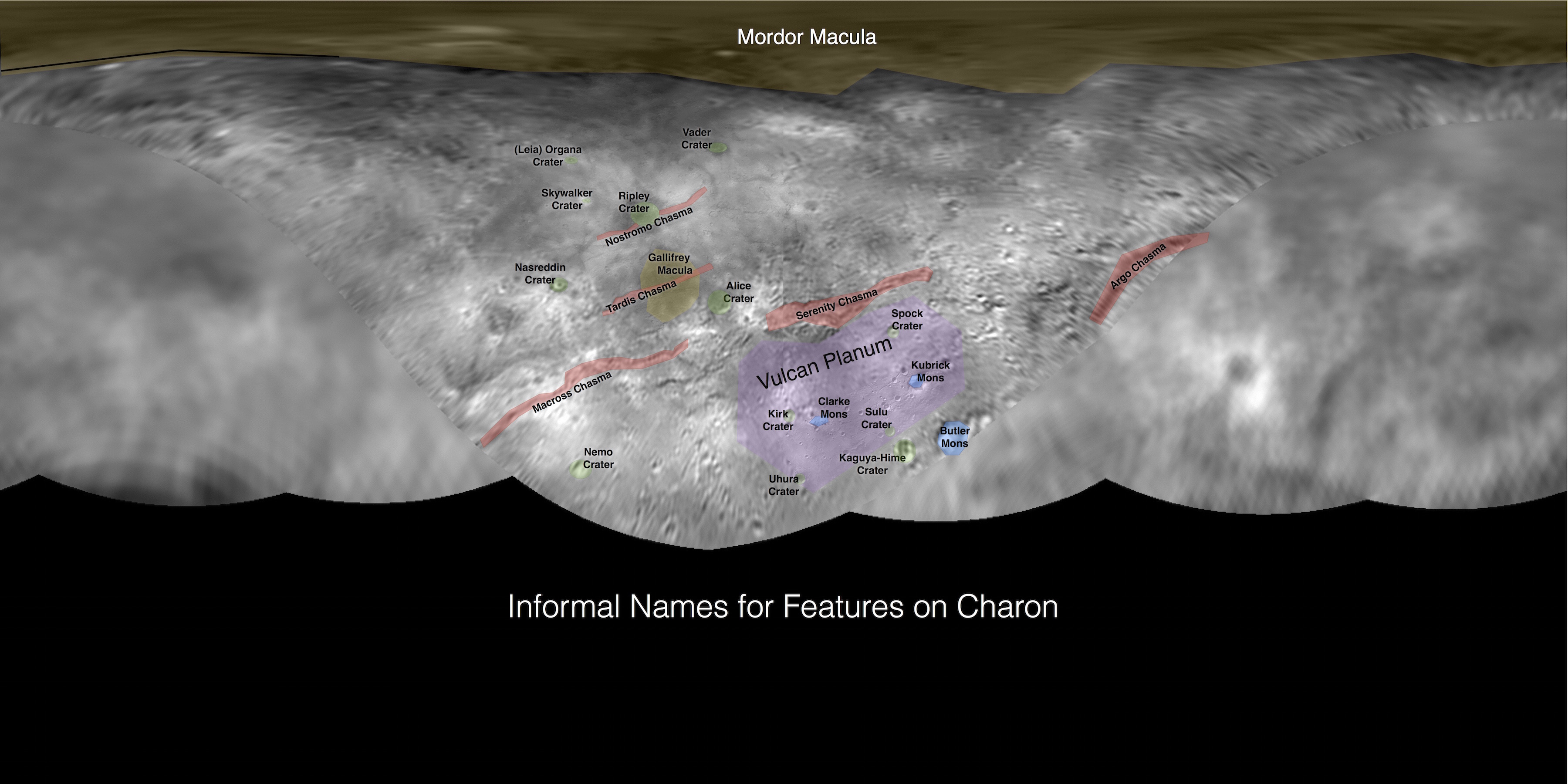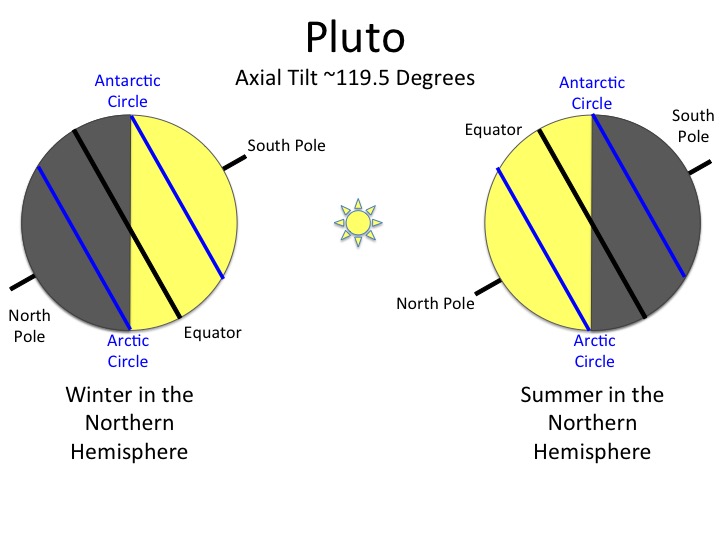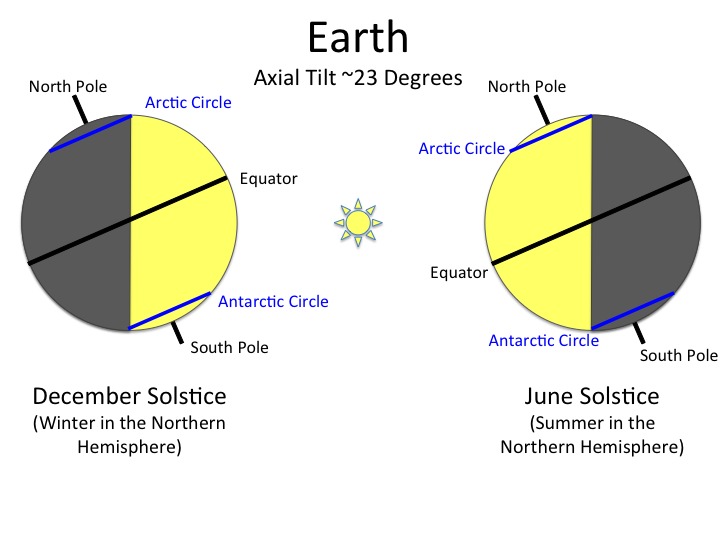Fame, neglect, demotion and love. What a dramatic decade it has been for Pluto. From its discovery in 1930 way out in the Kuiper belt, this dwarf planet has been on quite the roller coaster. Last year it revealed its heart and stole ours back.
New Horizons’ 2015 fly by gave us snapshots that we all fell in love with. Pluto surprised us by showing us more than than the fuzzy patches Hubble gave us back in 2010.

Hubble Telescope photographs from 2002-2003, published in 2010. Credit: NASA, ESA, and M. Buie (Southwest Research Institute).
[embedyt] http://www.youtube.com/watch?v=B0xkupKwjfM[/embedyt]
Here’s my top 5 favourites of what we know now:
-
There is more water ice spread across Pluto than we thought.
The Ralph/Linear Etalon Imaging Spectral Array (LEISA) aboard New Horizons observed Pluto’s surface from a range of 108,000 km to show areas where water ice is most abundant as well as possibly detecting areas that are depleted in methane. LEISA detects infrared light and analyses the different patterns that each molecule creates. This gives us better insight into the distribution of how much methane (CH4), nitrogen (N2), carbon monoxide (CO), and water (H2O) is on Pluto’s surface. This is an important discovery since it exposed that water ice was considerably more widespread than what was hypothesised. Scientists think that in the ‘heart’ region of Pluto (otherwise known as Sputnik Planum), water ice bedrock might be hidden underneath a thick blanket of other ices made of methane, nitrogen and carbon monoxide.

False colour image of water ice concentration across Pluto. Image on the left shows the initial New Horizons map compared to the LEISA Spectra on the right. Credit: NASA.
2. It is geologically pretty amazing!
Pluto has probably been geologically active quite recently. The diversity in visible features allows geologists to estimate the age of the different areas. So, scientists have been taking a survey of the number of craters that they see on Pluto to determine its age. The findings vary. Evidence shows that some areas are geologically ancient, dating back to the end of Late Heavy Bombardment during when the Kuiper belt and the outer solar system rearranged about 4 billion years ago. A part of the ‘heart’ of Pluto, the impact free Sputnik Planum seems to have formed only in the last 10 million years.
“We’ve mapped more than a thousand craters, which vary greatly in size and appearance,”
said postdoctoral researcher Kelsi Singer, of the Southwest Research Institute (SwRI) in Boulder, Colorado.
“Among other things, I expect cratering studies like these to give us important new insights into how this part of the solar system formed.”
Locations of more than 1,000 craters mapped on Pluto by NASA’s New Horizons mission indicate a wide range of surface ages. Credit: NASA
We see more evidence of Pluto’s geological youth as we move along towards Wright Mons. It seems that only one impact crater has been identified, indicating that it was recently an active volcano and a young region.
“These are big mountains with a large hole in their summit, and on Earth that generally means one thing—a volcano,”
said Oliver White, New Horizons postdoctoral researcher with NASA’s Ames Research Center, Moffett Field, California.
Wright Mons and Piccard Mons, two of the most distinctive mountains seen on Pluto could also be cryovolcanoes. They appear similar to the lava spewing mountains visible on Earth, however in this case the’lava’ might just be a mix of different ices.
White continues,
“If they are volcanic, then the summit depression would likely have formed via collapse as material is erupted from underneath. The strange hummocky texture of the mountain flanks may represent volcanic flows of some sort that have travelled down from the summit region and onto the plains beyond, but why they are hummocky, and what they are made of, we don’t yet know.”
To confirm the evolution of Pluto’s geology and atmosphere will give us an idea of how things work way out there in the Solar System.
“After all, nothing like this has been seen in the deep outer solar system,”
said Jeffrey Moore, New Horizons Geology, Geophysics and Imaging team leader, also from NASA Ames.

3D Topographical maps of Wright Mons (top) and Piccard Mons (bottom). Blues indicate low terrain, green indicate the middle grounds and browns indicate the highest elevation. Credit: JHUAPL

On the left is al-Idrisi Montes, mountainous highlands thought composed primarily of blocks of water ice. A sharp transitional shoreline leads to the ice plains. Credit: NASA/Johns Hopkins University Applied Physics Laboratory/Southwest Research Institute
3. Pluto’s evolving surface shows us nitrogen ice glaciers as well as floating hills.
As we know, the Sputnik Planum revealed a variety of exotic ices thanks to LEISA. With temperatures around -230 degrees Celcius, these ices tend to behave like glaciers. The image below shows the regions and direction where nitrogen glaciers might still be flowing.

“We’ve only seen surfaces like this on active worlds like Earth and Mars”,
said mission co-investigator John Spencer of SwRI. “I’m really smiling”, he added.
Mixing of solid ice through the process of convection appears as polygonal cells. The internal heat slightly warms up the solid nitrogen which rises, cools and then sinks back down. The ridges mark the areas where the cooled nitrogen sinks back down.
Initial results from the New Horizon team say that the evidence for such kind of resurfacing imply some sort of geomorphic processes such as
“surficial erosion/deposition (as at Titan), crater relaxation (as at Enceladus), crustal recycling or tectonism (as at Europa), or some combination of these processes.”
This is very interesting as it seems the source of internal heat is still a head scratcher. They further add that,
“For icy satellites, resurfacing is generally associated with eccentricity tides , but these are not a viable heat source today for Pluto or Charon, whose orbital eccentricities are fully damped.”
Along the western boundary of the Sputnik Planum, we also see floating hills. Scientists believe these chains of hills broke off from the rugged terrains nearby and are like icebergs found in the oceans here on Earth. Their composition is concluded to be of water ice as it a lot less dense than the nitrogen ice carrying it away – hence they float!
These hills can start to congregate as they move in towards the edges of the polygonal cells. The Challenger Colles seen on the top left of the image below shows are area of where these hills have gathered together. However in this case, they are thought to have stranded in shallow nitrogen ice areas.

4. It has some pretty cool names.
The features on Pluto have been given informal names which the International Astronomical Union (IAU) will hopefully confirm. Here are themes for naming Pluto’s regions:
![]() P1. Space Missions and Spacecraft
P1. Space Missions and Spacecraft
![]() P5. Underworlds and Underworld Locales
P5. Underworlds and Underworld Locales
![]() P6. Travelers to the Underworld
P6. Travelers to the Underworld

Now I could name them all, but here are my favourites!
- Tombaugh Regio

Clyde Tombaugh born on Feb. 4, 1906 and died on Jan. 17, 1997
As far as seeing planets with the naked eye, we can only see as far out as Saturn. The planets further than that were discovered after the invention of telescopes. These include Neptune, Uranus and the dwarf planet Pluto. Clyde Tombaugh examined thousands of photos of the night sky over time and in that process discovered Pluto in 1930. New Horizon carries a small amount of Tombaugh’s ashes with it in an aluminium canister.

Inscription on the canister reads, “Interned herein are remains of American Clyde W. Tombaugh, discoverer of Pluto and the solar system’s “third zone.” Adelle and Muron’s boy, Patricia’s husband, Annette and Alden’s father, astronomer, teacher, punster, and friend: Clyde W. Tombaugh (1906-1997).” Credit: JHUAPL.
- Hillary Montes and Norgay Montes.
The mountain ranges bordering the Sputnik Planum have been named after the first two humans to reach the summit of Mt. Everest in 1953. It’s amazing to see that New Zealand has something to be proud of way out there at the edge of the Solar System.

Sir Edmund Hillary and Tenzing Norgay in 1953. Credit: AP
“For many years, we referred to Pluto as the Everest of planetary exploration,” said New Horizons Principal Investigator Alan Stern of the Southwest Research Institute, Boulder, Colorado. “It’s fitting that the two climbers who first summited Earth’s highest mountain, Edmund Hillary and Tenzing Norgay, now have their names on this new Everest.”

Pluto – Norgay Montes (left foreground); Hillary Montes (skyline); Sputnik Planitia (right) Near-sunset view includes several layers of atmospheric haze.
- Kupe Valles
Another one to add to the list for New Zealand! According to the Maori, Kupe was the first Polynesian person to discover New Zealand. The name Aotearoa (long white cloud) was given by Kuramarotini, his wife. Kupe hailed from Hawaiki and landed here during a battle with Maturangi’s great octopus. As a historic Maori explorer, he gains a place on Pluto!
Challenger Colles
The Challenger Colles are a collection of floating hills that can be seen on the Sputnik Planum. They were named to remember the crew of seven aboard the Shuttle Challenger that died 73 seconds after launch due to a failed booster engine.

Left to right are Teacher-in-Space payload specialist Sharon Christa McAuliffe; payload specialist Gregory Jarvis; and astronauts Judith A. Resnik, mission specialist; Francis R. (Dick) Scobee, mission commander; Ronald E. McNair, mission specialist; Mike J. Smith, pilot; and Ellison S. Onizuka, mission specialist. Credit: NASA
- Wright Mons and Piccard Mons
The Wright brothers, Wilbur and Orville Wright were aviation pioneers and most well known for successfully building the first aeroplane. Piccard Mons was named after the Swiss physicist Auguste Piccard who had a special interest in the Earth’s upper atmosphere and so sent up a balloon!
- Mordor Macula
This is not on Pluto, but on Charon; one of Pluto’s moons. The names are mostly after fictional characters, but my favourite is the Mordor Macula. Mordor is famously known from J. R. R. Tolkien’s universe of Middle Earth.

Check out all the names and where they derived from here.
It has seasons.
We know that the Earth’s tilt gives us the different seasons as it makes its way around the Sun every 365 days. The same goes for Pluto. The interesting thing is that Earth’s tilt is a mere 23 degrees compared to Pluto’s 119.5 degrees. Pluto’s orbital period is about 248 Earth years and it’s rotational period being 6 Earth days. This makes for some pretty dramatic seasons.

Seasons on Earth (above) and Pluto (below). Credits: MIT/Alissa Earle
It doesn’t end there though, Earth has a almost circular orbit around the Sun, compared to Pluto’s highly eccentric orbit. This also makes for some very hot summers and very cold winters. Keep in mind the average temperature on Pluto is around -200 degrees Celsius.
Brrrr…
New Horizons has now moved away from Pluto and continues deep into the Kuiper Belt where it will explore and keep sending back information about what lies out there.

New Horizons trajectory. Credit: JHUAPL.
For now, it looks like Pluto’s five seconds of fame are up, with the hypothetical ‘Planet X’ coming into the spotlight. We’re finding exoplanets light years away, and simultaneously still figuring out more about what is in our own solar system.
In the meantime, Pluto awaits.

